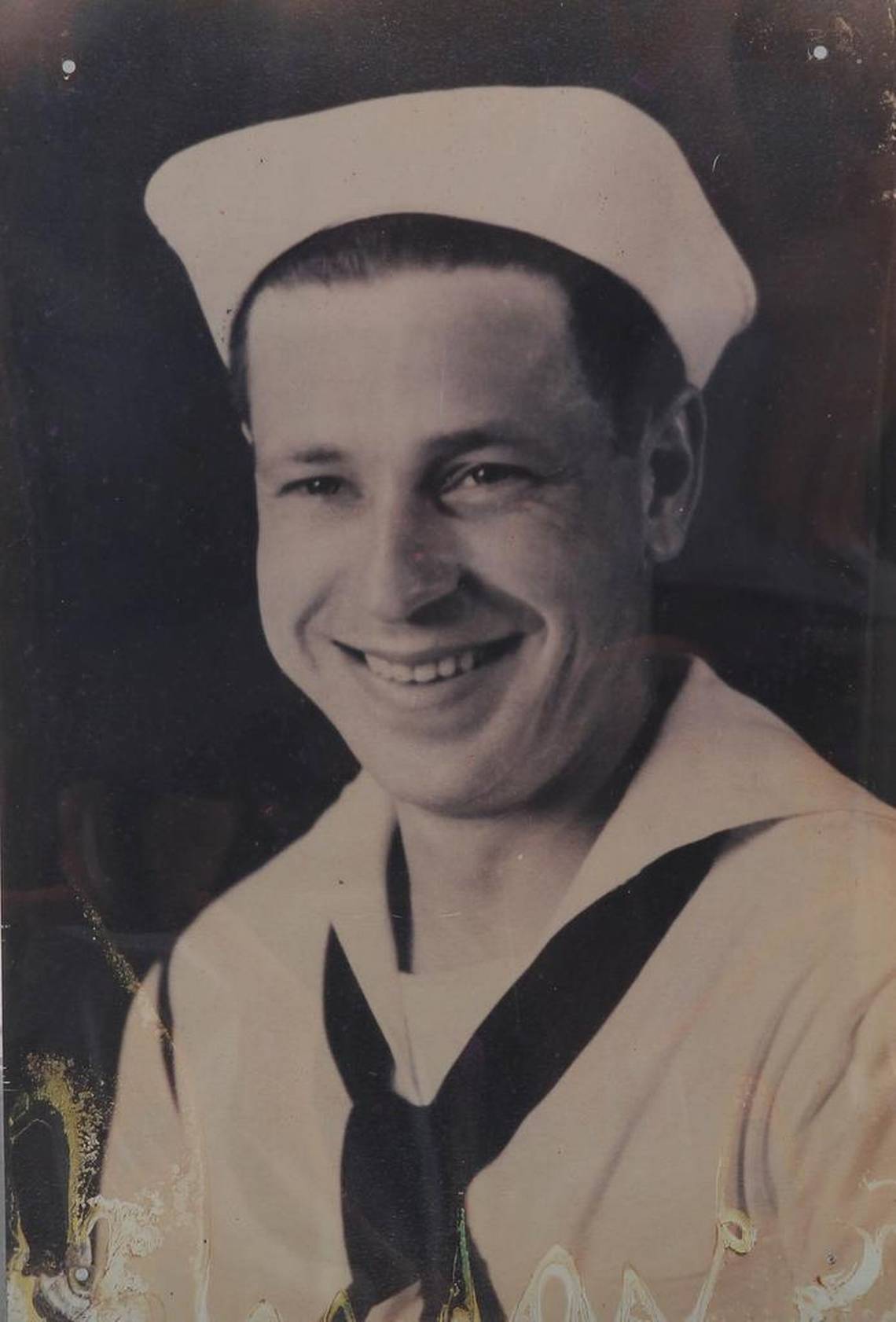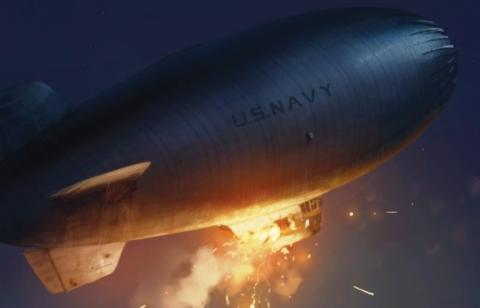STESSEL-ISADORE
ISADORE STESSEL

AMM2

ONLY BLIMP SAILOR EVER KILLED IN BATTLE WITH SUBMARINE
At 1909 hours in the early evening of July 18, 1943, blimp K-74 of Blimp Squadron 21 (ZP-21) departed Naval Air Station, Richmond, Florida, on a routine antisubmarine patrol mission. Visibility was excellent, and no submarines, friendly or enemy, had been reported in the patrol area. Aviation Machinist Mate Second Class Isadore Stessel was a member of the ten-man crew.
At 2340 hours, when K-74 was about forty miles off the Florida coast, a tiny blip of light began to glimmer on the radar operator’s scope. Range was 8 miles and the crew manned their battle stations as K-74 headed toward the unknown target. Several minutes later there was no mistaking what was ahead. K-4 had discovered the surfaced German submarine U-134 making 15-18 knots and it was headed directly toward a nearby tanker and freighter. Although current doctrine required that an airship finding an enemy submarine on the surface should stay upwind of her and guide airplanes and surface ships to deliver the attack, Lieutenant Nelson G. Grills, the K-74 command pilot, made the decision to protect the two ships and attack the submarine which was obviously headed for an immanent attack.
When K-74 was about 150-yards away, U-134 made a sudden turn, having apparently become aware of the approaching blimp. As K-74 approached the submarine it began firing at the approaching blimp and quickly the airship’s.50 caliber machine gun returned fire. Seconds later as K-74 passed over U-134 at 250-feet altitude, two depth charges were released but they failed to sink the submarine. As K-34 passed over U-134’s firepower began to make its effects felt. K-34’s starboard engine was hit and burst into flames. Although the fire was quickly extinguished the airship no longer responded to rudder or elevator. As control became impossible K-34 began a steep climb to about 1,000 feet, then slowly began falling tail first into the sea as the envelope began to deflate from the loss of helium. Although 1,400 pounds of gasoline were dumped overboard this did not stop K-74’s descent and the port engine was still running when K-74 hit the ocean surface. Soon water rapidly began filling the gondola as K-74 settled into the Atlantic. After sending a radio distress message all ten crewmen quickly abandoned ship and moved clear of the airship, none of them injured.
Expecting the airship to sink and remembering that it still had depth bombs hanging on its rack, the crew did not want to be close when it did, so they swan a short distance away to await rescue. Their rubber life raft had been lost when the crew abandoned ship, so May West inflatable life vests were all they had to keep them afloat. About 0745 on the morning of July 19, a Grumman J4F amphibian reached the scene, observed survivors in the water, but was unable to land because of rough seas. The plane flew to the nearby destroyer USS Dahlgren (DD-187) about fifteen miles away to seek their help. When the Dahlgren was within minutes of reaching the survivors, a shark was seen to attack AMM2 Stessel who disappeared below the surface. When Stessel was momentarily seen again for a few seconds the water around him turned crimson, he disappeared and was not seen again leaving only a red cloud on the surface. Within several minutes of Stessel’s disappearance the rescuers arrived and fired rifles and machine guns at the sharks that swam nearby. The remaining K-74 crewmembers were soon rescued.
This is known as the only battle to have ever occurred between blimp and airship, and AMM2 Stessel is the only man known to have died as a result of such a battle. He was awarded the purple heart medal and his name is engraved on the Tablets of the Missing at the East Coast Memorial in New York City, New York. Historical records report that U-134 was sunk on August 27, 1943, by depth charges from the British frigate HMS Rother as the submarine was returning to Germany. All forty-seven men on board were killed.
Submitted by CDR Roy A. Mosteller, USNR (Ret)


